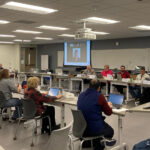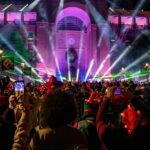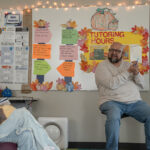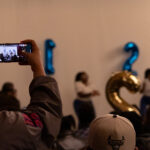Texas A&M University-San Antonio will open its doors to the public as a voting location for the 2020 general election. Voters will be able to cast their ballots on campus from 7 a.m. to 7 p.m. on Election Day, Nov. 3, outside the Mays Center for Experiential Learning in the first floor of the Science and Technology Building.
This year is the third time the university has hosted a polling site. Unlike past years, the Mays Center voting location will only be open on Election Day. Early voting in Texas began this week and will continue until Oct. 30; the closest early voting location to campus is Palo Alto College.
“This idea of being able to vote on campus on Election Day is great for student residents that live here, for neighborhood residents that live here, for people that work here,” university President Cynthia Teniente-Matson said in a Zoom interview Sept. 9. “It makes the convenience and the ability to exercise our right to vote prevalent here on the campus if we can point to a place to go and engage in our Constitutional right to do that.”
According to Edwin Blanton, executive director for the Mays Center, Bexar County voters are no longer required to go to their precinct’s voting location to cast their ballot, meaning that any registered voter can vote at the campus location on Election Day.
Blanton said voting locations are determined by Bexar County officials. Voting sites must be placed in specific locations to better cater to the needs of the over 2 million county residents. He expressed the university is a prime voting location because of the number of registered voters in the area, students living on campus and available facilities.
“For our area, really as A&M-San Antonio has grown, that’s where we’ve been able to engage the county in a conversation that we really should be a polling site,” Blanton said.
In-person voting crowds have the potential to expose people to COVID-19. Despite the pandemic, voting sites are limited on what preventive measures they can put in place to minimize risk.
“There’s a legal reason for that: basically if you mandate masks, wearing gloves or using your own pen or whatever, that could be perceived to be in some way interfering with the voting process and you’re not allowed to do that,” said political science Professor Andrew Sanders in an interview Sept. 25.
Sanders said polling locations have a perimeter around them and anything inside it interfering with the voting process could be considered a form of voting suppression. According to Britannica, voting suppression is “any legal or extralegal measure or strategy whose purpose or practical effect is to reduce voting, or registering to vote, by members of a targeted racial group, political party, or religious community.”
Texas has strict rules regarding what is and isn’t allowed at polling locations, raising health and safety concerns surrounding how in-person voting will be conducted. As confirmed in an election advisory published June 18 by Keith Ingram, the Texas Secretary of State’s Director of Elections, Texas voting sites cannot require voters to wear masks, go through temperature checks or even to sanitize their hands before voting; locations may provide optional temperature checks and personal protection equipment (PPE), but if a voter were to refuse, they cannot be turned away.
Currently, A&M-San Antonio requires students to go through wellness stations before entering buildings on campus; however, because the voting site will be run by the county, the university’s requirements will not apply.
Blanton said the county has put protocols in place, such as properly distancing voting machines and providing poll workers with adequate PPE, to make voting sites safe despite the crowds.
The Texas Secretary of State has also published health guidelines for voters and poll workers to consult before voting in-person. These guidelines suggest voters conduct personal health screenings before going to polling sites, wear masks and maintain social distancing while in line.
“We will try to maintain our building standards and encourage the best we can, but we can’t prevent people from coming in like we can during the school session, so it’s a bridge we have to cross,” Matson said.







